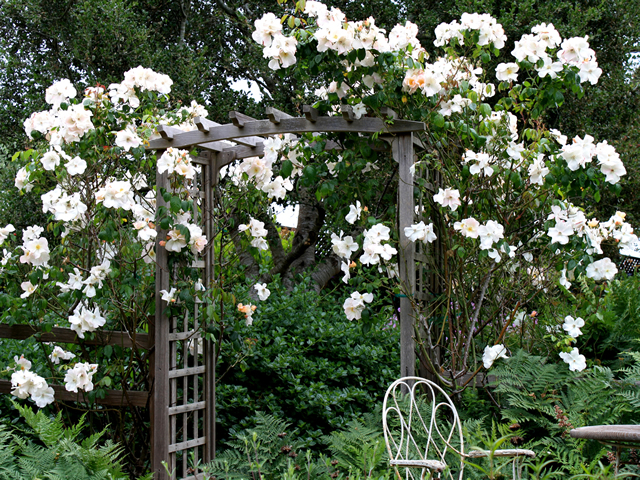
Sherie Bolen's trial and error approach has proven to work well in her CA garden.
"My approach to maintaining a large garden on California’s Central Coast (a few miles inland from Monterey Bay) is to use plants that require very little care. Research plus the trial & error method of selecting plants that can survive in our Oak Woodlands environment without regular irrigation and no fertilizers has resulted in a garden that has survived during our prolonged drought years. A mix of California natives and other plants from Mediterranean climates seems to be working, and most of the water is supplied by morning fog rolling in from the bay. A small lawn, recently replaced with drought tolerant Fescue, is the only exception to receive regular but infrequent irrigation."
Have a garden you'd like to share? Email 5-10 photos and a brief story about your garden to [email protected]. Please include where you are located!
Have a mobile phone? Tag your photos on Instagram or Twitter with #FineGardening!
You don't have to be a professional garden photographer – check out our garden photography tips!
Do you receive the GPOD by email yet? Sign up here.
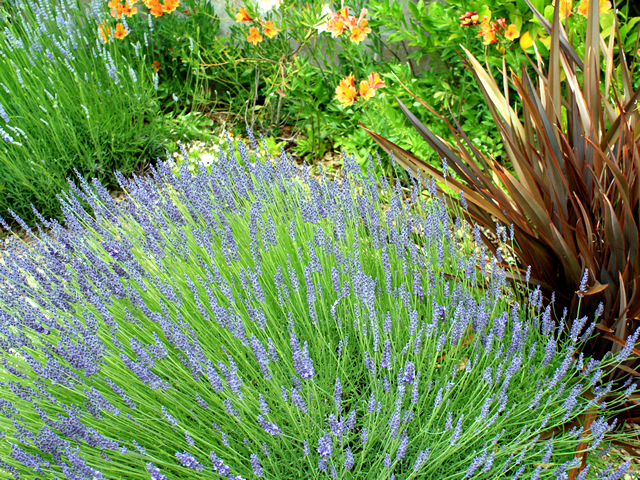

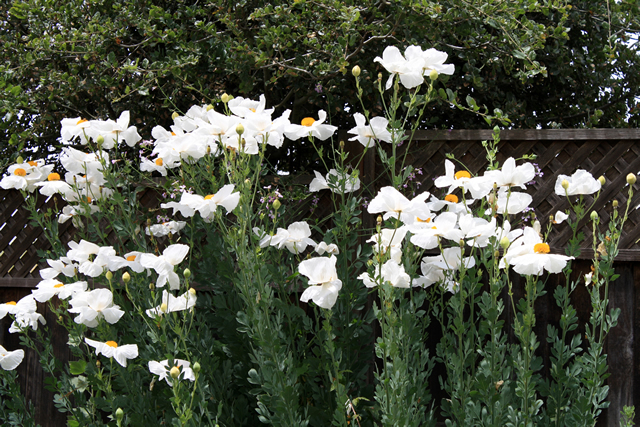
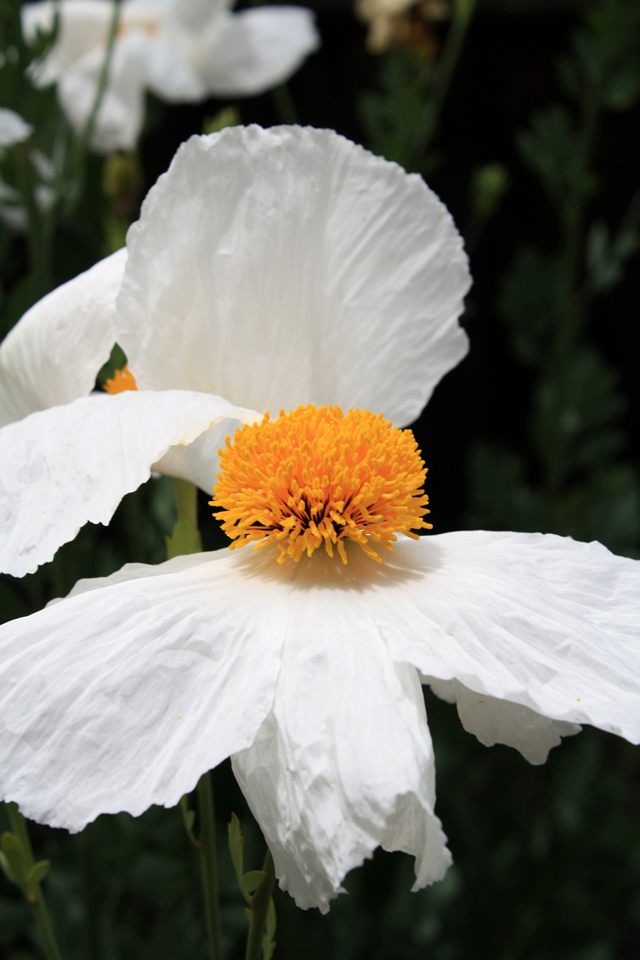
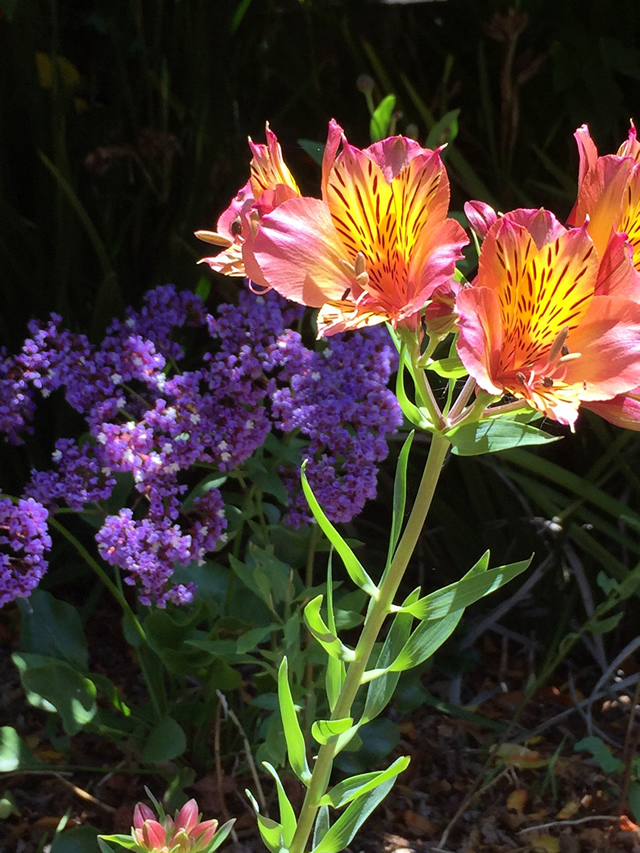
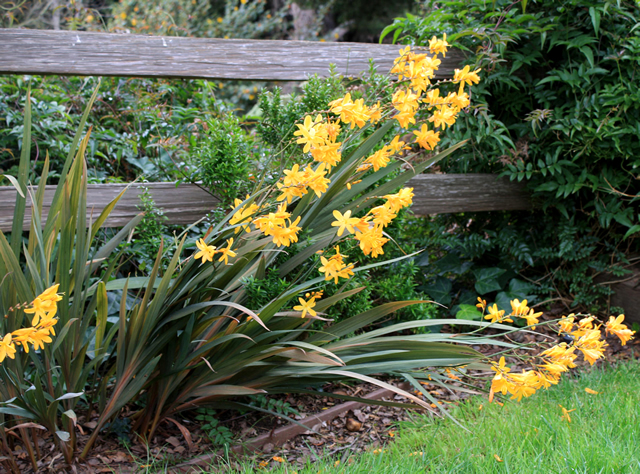
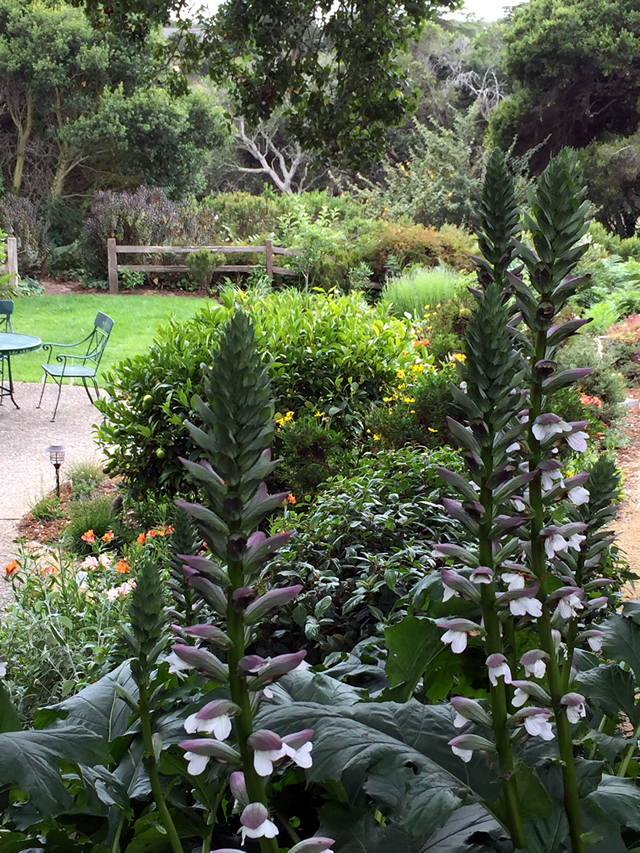
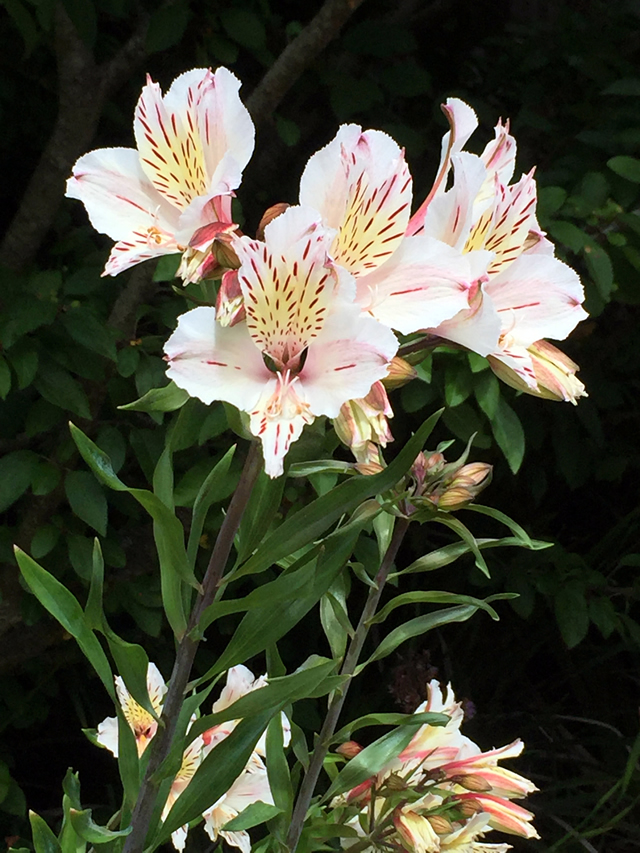
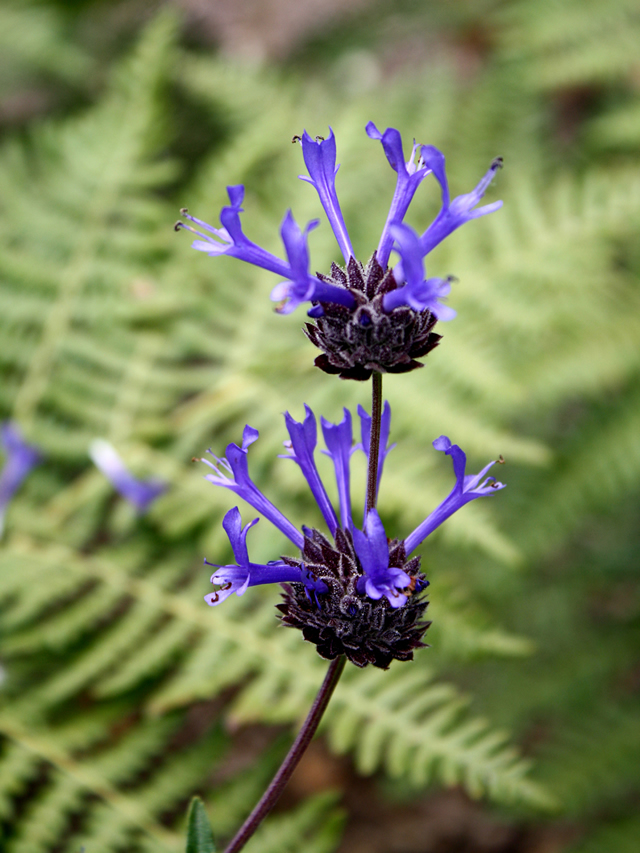

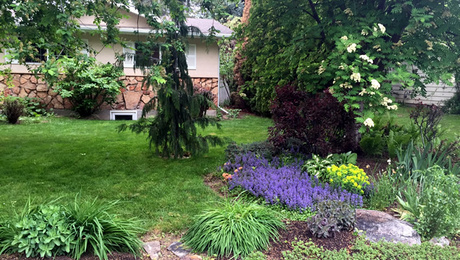

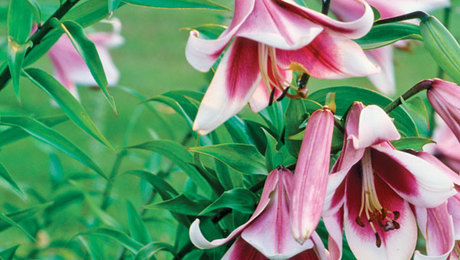













Comments
Nice garden, selection of plants for your environment and great photography, Sherie. More gardeners will need to adopt your approach in the future due to climate change. A good lesson to us all. Well done!
Lovely garden Sherie. Have you found that Bear’s Breeches blooms every other year? That seems to be the case with mine. Your lavender is a knockout. Vikki in VA
Gotta' say, Sherie, based on these pictures of all your thriving plant material, you have transitioned to the trial and success phase of your gardening. I'm struck by all the lovely flowers appearing throughout...even including the elusive (for me) blooming stalks of acanthus mollis ....sigh, so that's what its flowers look like? The swath of white poppies is pure enchantment...like a cloud of hovering butterflies. And looks like Scully is living the doggie good life...I'm sure his day is filled with lots of fun snuffling.
ps When do you cut back your lavender? I suffer from lavender pruning anxiety!
I've had a Bear's Breeches (Acanthus mollis) in my zone 6b garden for five years and it has yet to bloom, even after a mild winter. I keep it because I love the large, full shiny leaves. Last year, however, I purchased an Acanthus spinosus (blooms in colder climates) and it is blooming prolifically this year! It looks very similar to the Acanthus mollis, but its leaves are more highly serrated. I was able to root two tiny "babies" that were growing from the holes in the bottom of the pot when I purchased the plant and both are sporting a flower stalk this year!
That's so cool about the other variety of acanthus being such a generous bloomer for you. I am going to keep an eye open for it at my local nurseries. Thanks for mentioning it.
I have been growing Acanthus mollis for about 10 years now. After about 4 years in what I assumed was a "tough" spot, I moved it and it quickly rewarded me the following year with amazing growth and several towers of blooms, only to never bloom again. If it weren't for the cool leaves I'd yank it. And oddly enough it has been trying to grow back in the spot from which I originally moved it - must have left behind a little root, but still no blooms there either.
As for the lavender, hopefully you're pruning it throughout the season and adding it to your drinks and food. But if not, the pruner I am, I usually prune it hard into old wood (to about 3-6" depending on any early growth) after the final frost of early Spring...you should be set for a fresh, less-crazy, mound of lavender for Summer.
Ha, David, , shivers of "gulp, gulp", went up and down my spine and ended as tingles of fear in my fingers as I read your advice about lavender pruning...it was the pruning into old wood that set off my alarm bells. OK, deep breaths on my part...into old wood...is that 3-6" from the ground or into the stem from where the bloom stems spring forth. See how awkwardly I phrase things ...as if pruning lavender is as foreign to me as trying to speak Russian would be. See...I told you I was a basket case about this topic. I should go on youtube and watch a tutorial.
And, yes, I love the tropical looking leaves of the acanthus also even if I don't get blooms.
Hi Michaele. Yes, deep breath, and let it out all out, including that fear. I was suggesting 3-6" from the ground. Typically there will already be some new growth I have found (sort of my indicator that I'm gearing for some shearing), so keep some of that. I myself feel better about seeing some foliage. I have never cut it back completely to the ground or to totally naked woody stems (see I have my own apprehensions too). Maybe ease yourself into it by cutting a stem or two at a time, leaving an old one just for insurance until you're comfortable. And I certainly don't think you will run into any issues if you prune late spring or early summer. Like I said, I have been using it quite a bit, and already the branches have rejuvenated from the cuttings I made just several weeks ago and a new round of blooms on the way. The bees seems pleased.
Thanks for talking me down from my anticipated next year's panic attack. I guess the key is to wait for some leaf bud break to show in the spring and take it from there. But, wait, did I read you correctly that you prune again after the first wave of bloom to get a second round?
But, hey, a lightbulb just turned on...this is all exactly what I do with my Russian sage. I experiment with different pruning timings and always get at least 2, if not 3, rounds of flowering from it.
I cut mine back to where new growth is just showing. If I cut back old wood the blessed thing dies! Don't cut until late or mid spring, and both you and the lavender will thrive.
Sherie, your garden is beautiful! That poppy is such a beautiful plant! It is obviously hardy in your climate. Here, it would self seed and come up in places where I wouldn't want it. It is so showy, en masse. I've not seen the acanthus in bloom before- just beautiful! I always picture CA gardens as just being a postage stamp, but you are blessed to have a large property that backs to woods. Thanks for sharing and widening my horizons!
Simply stunning images Sherie! Thanks for sharing!
I don't know which I loved the most - the Matilija Poppies or the Bear Breeches.
Lovely gardens. The 'Sally Holmes' Rose is beautiful. Wish I could see the Meyer Lemon plant better in the photo.
Sherie - Your garden is a delight. I love your plant selections and the fact that you achieve so much beauty with little or no watering. Does the opening in your fence (third photo from the bottom) lead to a path through the woods?
Hard to believe this lush, green, floriferous garden is drought tolerant and un-irrigated. I'm stunned. So jealous of the Romneya; I need to find a cold-hardy substitute. Inspiring!
Sherie... You have learned your lessons on dealing with low water plants so well you could teach a master's class! Your gardens are spectacular and environmentally thoughtful. I am also in serious lust over your Matilija Poppy! I have never seen it before, it is exquisite!
It's interesting that you mentioned using plants from the Mediterranean region. I garden in Denver that is often in drought and we've found that native plants and plants from the Mediterranean region also thrive in our low water situations.
Beautiful! Loving the poppies and rose arbor. It's all fabulous.
Outstanding garden, especially considering the the tough conditions you describe. Your methods have rewarded you nicely. Gorgeous photo of the sunlit alstroemeria and statice.
Do you cook with your lavender much...I have finally found a good spot in which to grow lavender myself in my garden, and have been experimenting with all sorts of culinary delights. And it looks wonderful otherwise.
You've created a grand oasis there in dry California. Well done, and thanks for sharing.
Spectacular results under difficult circumstances! Congratulations!
Beautiful photos, Sheri. You certainly haven't sacrificed beauty by going with drought tolerant plantings. The Acanthus mollis flower is so spectacular. I'm going to have to start babying mine a little more now that I know its potential.
Lovely garden with very interesting and pretty plants. I don't live in a drought area but do try to use some drought tolerant plants and concentrate on any plant which happily survives in my -5 zone. The swings of temperature from -5 to 80degF give a challenge to be sure.
My acanthus flowered this year after wandering around for at least three years before deciding to like where it is planted and has produced two big flowers. I'm thrilled.
I am in love with the white poppies, so pretty and fragile.
Thank you Sheri.
Log in or create an account to post a comment.
Sign up Log in